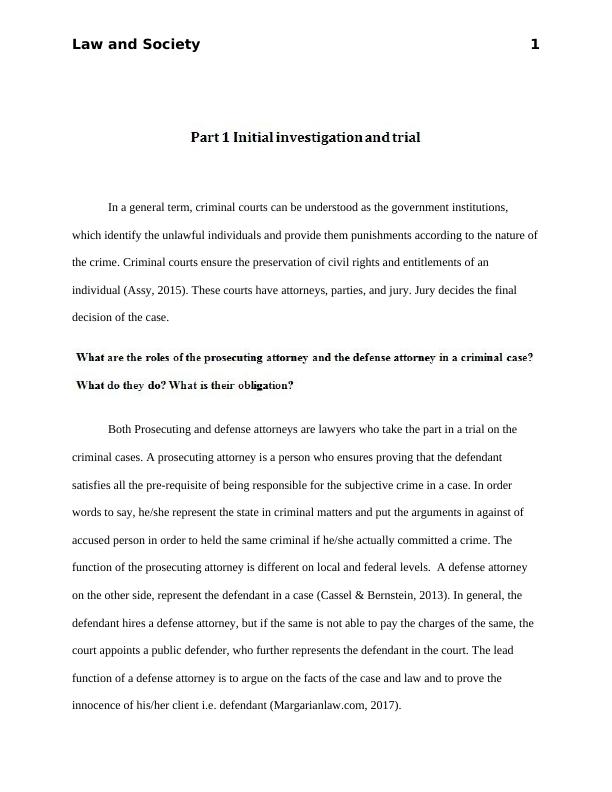Law and Society
9 Pages2021 Words221 Views
Added on 2023-04-21
About This Document
This article discusses the elements of the legal system, focusing on criminal courts and the roles of prosecuting and defense attorneys. It explores the adversarial and consensual models of working in criminal courts and the responsibilities of the jury. The article also examines the importance of the jury in the American society and the reasons behind plea bargains. Overall, it provides insights into the functioning of the legal system in relation to criminal cases.
Law and Society
Added on 2023-04-21
ShareRelated Documents
End of preview
Want to access all the pages? Upload your documents or become a member.
Stages of a Criminal Trial in American Criminal Justice System
|4
|714
|193
Criminal Justice Assignment 2022
|7
|1468
|12
Management
|4
|617
|78
Criminal Law Assignment 2022
|8
|1764
|28
Criminal Procedures of a Felony Crime | Report
|8
|2055
|18
Burden of Proof in Criminal Cases: Evidential and Legal Burden Explained
|8
|3547
|94



